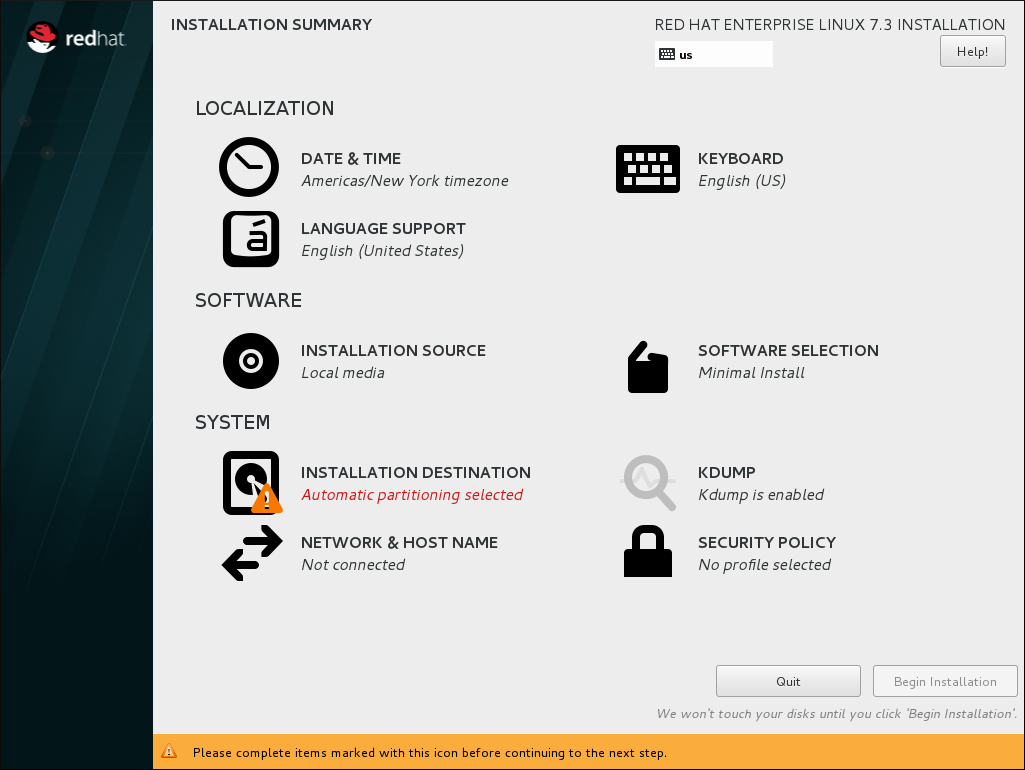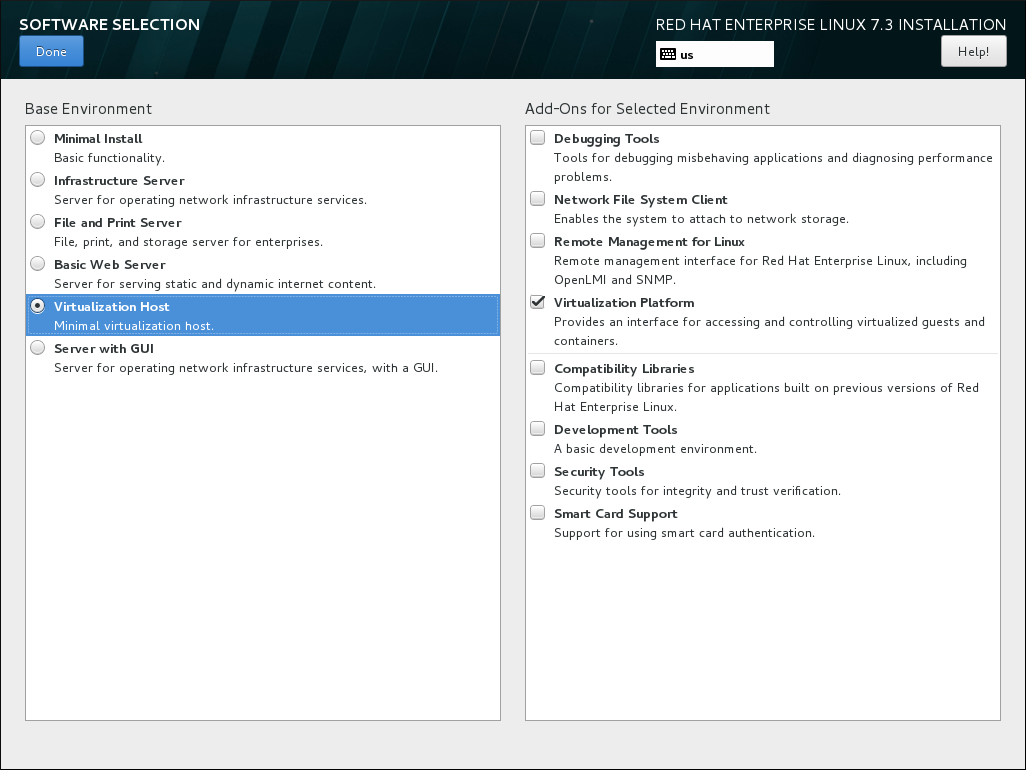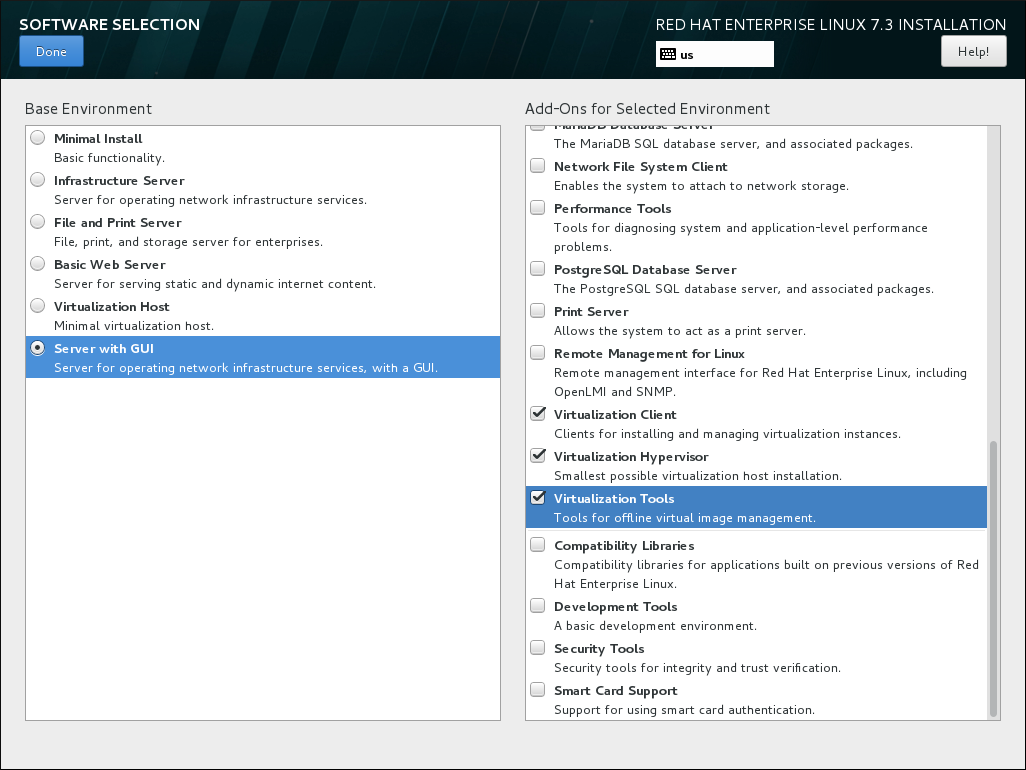Dieser Inhalt ist in der von Ihnen ausgewählten Sprache nicht verfügbar.
Chapter 2. Installing the Virtualization Packages
yum command and the Subscription Manager application.
kvm kernel module.
2.1. Installing Virtualization Packages During a Red Hat Enterprise Linux Installation
Note
Important
Procedure 2.1. Installing virtualization packages
Select software
Follow the installation procedure until the Installation Summary screen.Figure 2.1. The Installation Summary screen
In the Installation Summary screen, click Software Selection. The Software Selection screen opens.Select the server type and package groups
You can install Red Hat Enterprise Linux 7 with only the basic virtualization packages or with packages that allow management of guests through a graphical user interface. Do one of the following:- Install a minimal virtualization hostSelect the Virtualization Host radio button in the Base Environment pane and the Virtualization Platform check box in the Add-Ons for Selected Environment pane. This installs a basic virtualization environment which can be run with
virshor remotely over the network.Figure 2.2. Virtualization Host selected in the Software Selection screen
- Install a virtualization host with a graphical user interfaceSelect the Server with GUI radio button in the Base Environment pane and the Virtualization Client, Virtualization Hypervisor, and Virtualization Tools check boxes in the Add-Ons for Selected Environment pane. This installs a virtualization environment along with graphical tools for installing and managing guest virtual machines.
Figure 2.3. Server with GUI selected in the software selection screen
Finalize installation
Click and continue with the installation.
Important
2.1.1. Installing KVM Packages with Kickstart Files
%packages section of your Kickstart file:
@virtualization-hypervisor @virtualization-client @virtualization-platform @virtualization-tools
@virtualization-hypervisor
@virtualization-client
@virtualization-platform
@virtualization-tools

